With Oasis Phono Stage Manley Labs Takes Seafood Off the Menu
hybrid design delivers low noise, linear tube performance
This review has taken longer to write than EveAnna Manley took to finish the design and put Oasis into production and make it available to buy. That's a long time but she had an excuse. I have none. Well, there were reasons of scheduling, "stuff" happening, prior commitments etc. Her excuse was designing a new from the ground up phono preamp to replace the popular Chinook, though it uses basic circuitry found in all Manley phono preamps.
When I visited Manley Labs (recently sold to Dick Ulrich) late fall 2019 the company was working on the Chinook replacement, which at that point I don't recall as having been given a name. EveAnna showed me the prototype that was close to being ready for production but that didn't finally happen until 2024!
The name "Oasis" is one of the few in the company's product lineup not named after sea food or sea life or salmon varieties, so before finding out to what the name referred I figured it had something to do with the new switch mode power supply that reduces cost and weight, is said to improve performance and is universal—can be used throughout the world. So I thought Oasis had to do with a watering hole all were welcome to drink from or something like that.
But no, Oasis was named not after the noisy band (which wouldn't have made sense especially since this Oasis is anything but noisy), but after a so named mastering facility that in the mid 1990s the late David Manley (to whom EveAnna was once married), built for mastering engineer Eddy Schreyer. The mid project drama, (well known to us veterans) is spelled out in the instruction manual's unusual "Inside Story" preview.
Otherwise what's important to know first is that the $3999 Oasis descends from royal lineage: the Steelhead—topmost in the Manley phono preamp lineup, as well as from the far less costly Chinook, which Oasis replaces.
What's the Story (Morning Glory)?
The story begins with the Steelhead, which Manley introduced at the 2001 Consumer Electronics Show in Las Vegas. I owned one and it was and is among the world's best and most versatile phono preamplifiers. It was a double chassis design and was and is far more complex and costly than the stripped down to Steelhead basics Chinook that came next.
Oasis incorporates the new MANLEY POWER® Switch—a compact, bespoke switch mode power supply designed for Manley Labs by Bruno Putzeys, whose name should be familiar to many if not most Tracking Angle readers, that, among other accomplishments does away with heavy transformers and provides world wide universality. The instruction manual boasts: "the power supply auto senses the mains input voltage and can be operated anywhere in the world at any voltage between 90 and 254VAC and at any frequency, 50Hz or 60Hz, without reconfiguring anything. All the power supply rails are regulated and amply filtered. Your OASIS has been certified by the FCC to be immune from outside RF interference and guaranteed to comply with emissions regulations." I don't wish to speak for EveAnna or her successor but getting this power supply "right" is probably what held up the introduction of the Oasis.
As in the Steelhead dual triode 6922 tubes (an upgraded version of the 6DJ8) provide gain in conjunction with low noise FETs. RIAA equalization is passive and there's no global feedback in the circuit, though it does include some local feedback. One 6922 per channel is for gain, the other, directly coupled, is the output driver. The two tube arrangement is called a "White Follower configuration", which is a high performance push-pull buffer superior to a standard cathode follower, capable of delivering twice the output current. The circuit's lower output impedance, makes it ideal for driving long lengths of cables and difficult tube or solid state loads.
The signal doesn't pass through any I.C.s though if you look inside you'll see a few. They act as servos to provide bias voltage to each FET, and there are other chips there to perform logic functions for smooth turn on and shut down minus thumps and bumps. I could write a few paragraphs on the elegance of the turn on process in logic but I won't!
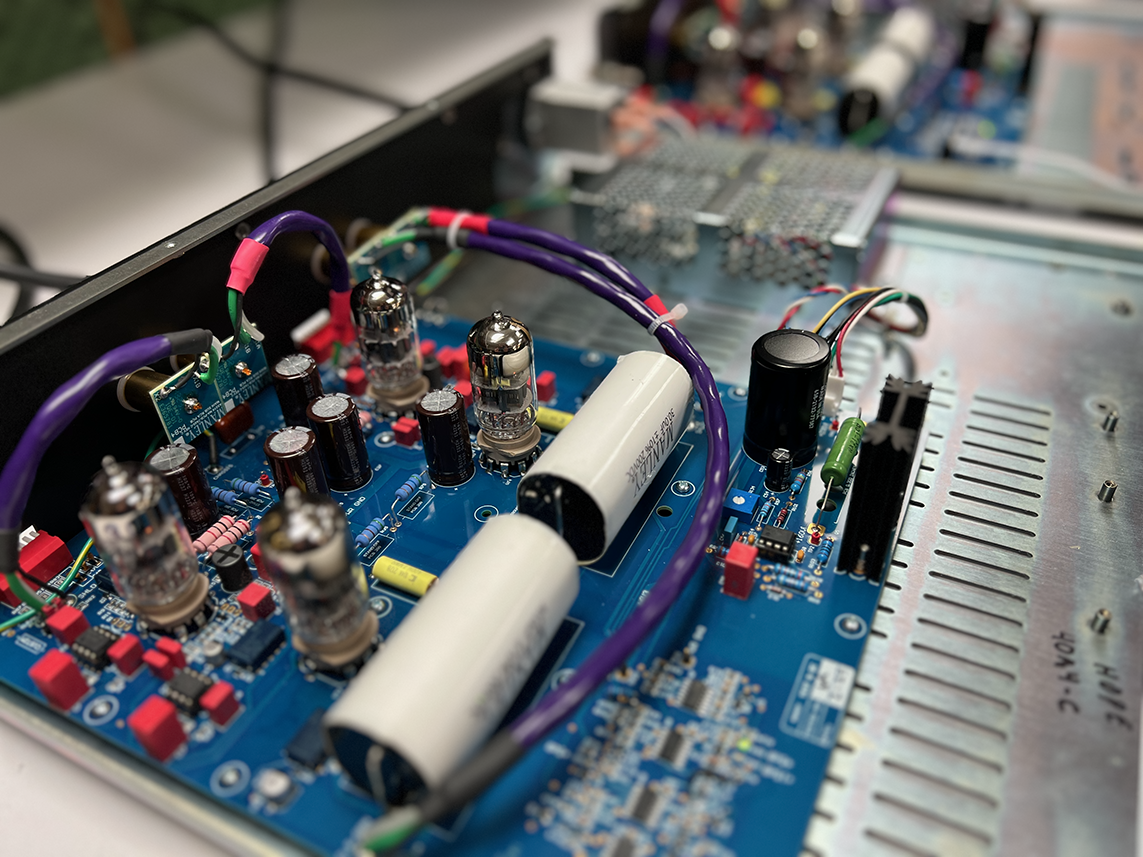
There's a new powder-coated over zinc steel chassis design that will be shared with forthcoming Manley preamplifiers, one of which was featured in a video from last Spring's AXPONA show. When I removed the Oasis's 3/8" thick CNC machined front plate (available in various colors) I saw the chassis cut outs for that unit's 3 knobs. It's a bit of Manley Labs forward thinking.
Unlike the Chinook, you needn't remove the cover to get to the loading and gain DIP switches, which is a big convenience and a very good idea because sliding off the cover (which is a handsome, large radiused one-piece affair helping to give the Oasis a clean, attractive appearance), is a royal pain. The only bigger one is getting the cover back on! Not really a problem unless you get into tube rolling or aren't happy with the loading options, which most of you will be.
On the back panel is a pair of DIP switches for setting L and R channel resistive and capacitive loading and a single DIP switch set for choosing gain at 45dB, 50dB, 60dB or 65dB. Though the resistive loading DIP switch bank includes but 5 resistive load choices (50Ω, 100Ω, 200Ω, 400Ω and 800) and those should satisfy all but the most finicky listeners, various DIP switch combinations can produce a total of 32 resistive loads, including of course 47kΩ for MM, or H.O. MC use. 3 capacitive load DIPs (50pF, 100pF and 200pF) likewise offer 8 capacitive load choices from 0pF to 350pFs. You can even go in and electrocute yourself while soldering in custom capacitive or resistive loads. The details are provided in the manual.
Oasis includes the 4th "corner" RIAA curve at 3.2µs, which in some "corners" is somewhat controversial. In Stereophile, Keith Howard disses it John Atkinson isn't a fan, but over at Manley Labs they believe in it and implement it in the network. Some phono preamps offer it as a switchable option. Manley's argument is: the fourth corner of about 3.2 µs, which when ignored, causes most phono stages to continue rolling off the highest octave signals coming from the phono pickup, rather than turning the final “corner” and shelving to flat response at about 50 kHz. The comedy team of Flanders and Swan had a line about "any passing bat".
Set-Up
Setting up the Oasis is easy and as already noted, requires no entry into the interior of the unit, though some might find having to access the rear panel less than convenient, though all will agree it's easier than having to open up the box to do so. To repeat: depending on the nominal output level of your cartridge, gain can be set to 45dB, 50dB, 60dB or 65dB of amplification. These gain choices will accommodate virtually all Moving-Magnet and Moving-Coil cartridges. The back panel also contains DIP switches for adjusting the input resistive and capacitance loading values. 31 possible options between 26 and 800 Ohms plus 47k Ohms and 7 capacitive loading choices between 50 pF and 350 pF provide flexibility to match any MM or MC cartridge and fine tune the tonal balance (unless you wish to install your own resistors and capacitors). Chassis mounted high quality RCA jacks for input and output make connections easy. The only other job is pushing the front panel's blue LED lit on/off button. It will blink until the Oasis is ready for service and then it will glow bright solid blue.
i had the sensational Audio-Technica AT MC2022 cartridge ($9000) installed on the SAT CF1-12 and that's what I used for this review. The cartridge has a 12Ω internal impedance so 100Ω loading was the starting point.
Sound
Tube purists aside there's much that's attractive about hybrid designs like this. Properly done you get the low noise and rhythmic solidity benefits of solid state with the liquidity, saturated harmonic colors and effortless drive that tubes deliver. After living with the Oasis in (and out) of my system for many months it's clear this design, based on the Steelhead, is properly done. The Oasis's sonic personality is neither notably "tubey" nor "solid-state-y," but I suspect experienced listeners would hear that tubes are involved.
"Tube rolling" is not usually something I do when reviewing a tube piece. I prefer to review "as delivered". However in this case after many months of listening, one channel of the Electro-Harmonix SE tubes went MIA. That's not usually how tubes fail but in this case that's what happened. I did the inter channel tube swapping the instructions recommend and found a bad tube in the right channel output stage.
I chose to replace all 4 tubes with a set of Sovtek 6922s that had been matched for use in my old Audible Illusions preamp from the 1990s. Was a great piece! These were made in the same Saratov, Russia factory as the Electro-Harmonix HE tubes.
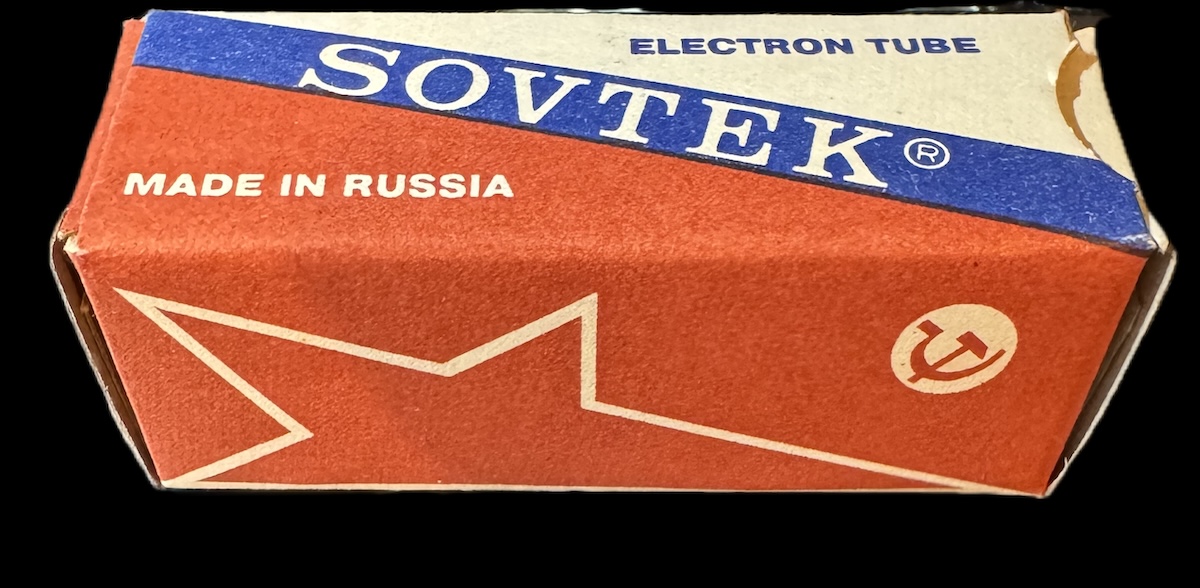 And of course that presented the biggest problem when reviewing tube gear: change the tubes and you change the sound. This change certainly produced a big difference.
And of course that presented the biggest problem when reviewing tube gear: change the tubes and you change the sound. This change certainly produced a big difference.
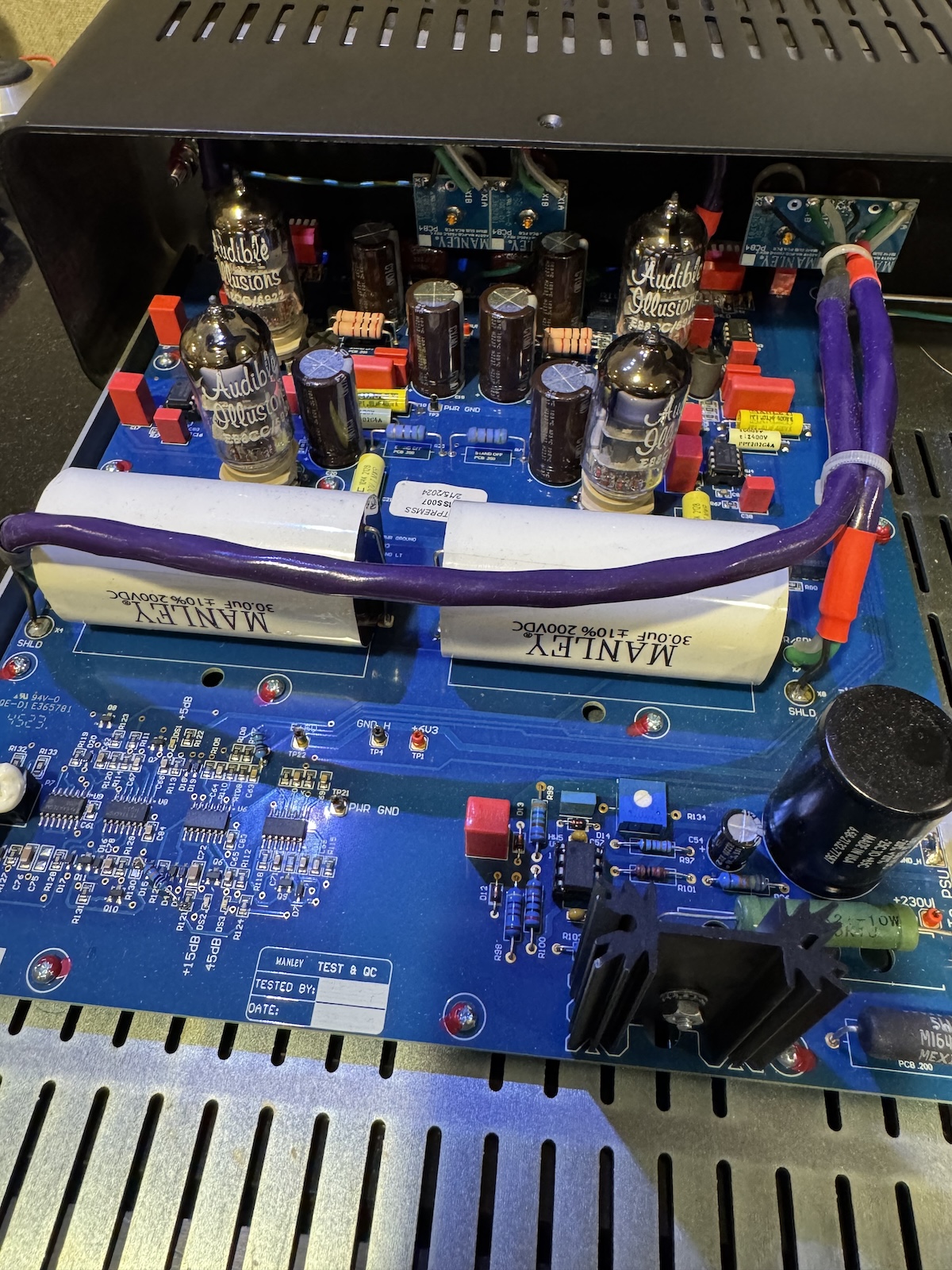
As did 4 of these--the legendary smooth plate, diamond bottomed "Made in Western Germany" ones that new (and in short supply) sell for $400.00.
I have a bunch of these, used. There was a time when you could go to garage sales and pick up all sorts of tube stuff for almost nothing and many had these tubes inside—even lousy console radios.
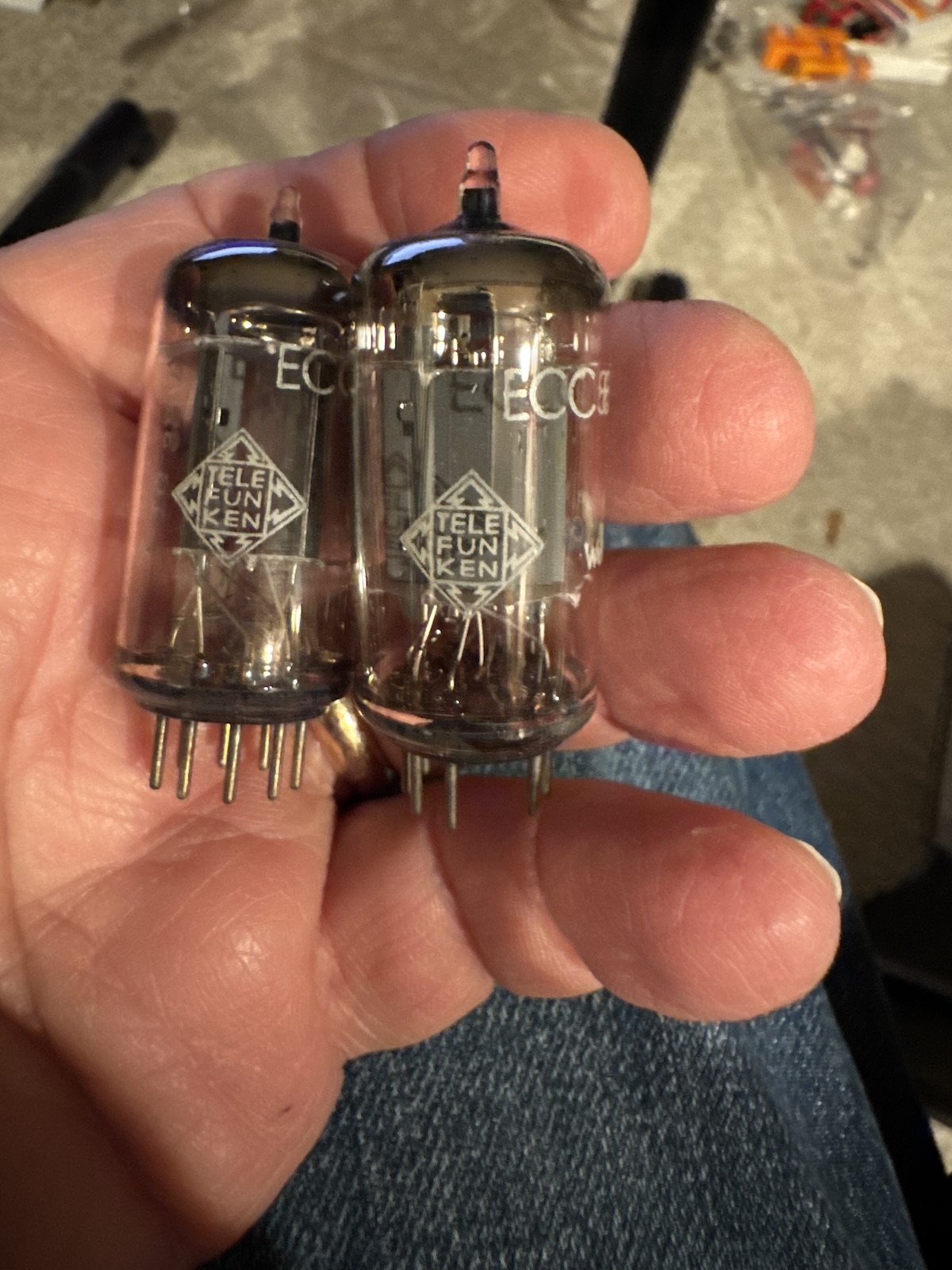
So precisely what does the Oasis sound like? Despite the sonic changes tube changes produced, its pleasing precise yet liquid character shone through all 3 tube choices. However I chose to stay with the Sovteks, which I found preferable to the "new and improved" Electro-Harmonix HEs. I chose not to review using the vintage Telefunkens because they are rare, super expensive and imparted a warmer, fuller and richer sound that sounds very different what you'll hear an Oasis with standard tubes sound like.,
Though the Sovteks were somewhat brighter in character, they sounded less congested and more transparent than the new Electro-Harmonix HEs. Had I not rolled the tubes of necessity I'd have described the Oasis as sounding somewhat congested and diffuse-sounding (though still as outstanding as this review suggests), but that would be the tubes talking.
Anthony Wilson's new Nonet group live recording House of the Singing Blossoms (SAM First Records (SFR 008 --not related to the French Sam Record label) recorded live at the SAM First club is a digitally recorded sonic spectacular recorded March 21 and 22 (my birthday) 2025. It's closely mic'd and until the applause you might not know it's live before a club audience (full review coming).
I first received this as test pressings (and used it in the Bird of Prey tonearm review but plugged only into the CH Precision P10) and had no idea about any of what was going on or who other than Wilson was playing. After a wild opener "Triple Chase", composed by Anthony's father the acclaimed composer/arranger Gerald Wilson, the mood abruptly changes as Anthony plays the unmistakable intro to Joe Zawinul's "In A Silent Way" but I'd rather relate to you how the Oasis presented Lennon/McCartney's "Because" on side 2. Wilson's intricate arrangement begins with his guitar stating the familiar synth part and then the various horns play the melody and again doing the synth parts with Gerald Clayton's piano drifting in the background.
There are multiple saxophones (baritone, tenor and alto), plus trumpet and trombone arrayed in three-dimensions across the soundstage, each in clearly defined space, timbrally and texturally convincing, easily discernible in space, with the room sound well-suggested behind as in the photo you'll see if you pick up the record, which I highly recommend. The Oasis's microdynamic delivery was nimble, helping to produce a "live" sensation. The precisely presented applause that followed erupted out of the black and you could "see" each audience member's clapping across and layered front to back. Of course the recording is remarkable, but so was the Oasis's presentation of it. More important than the detail delivery was the music's rhythmic flow and the transient naturalness—neither too sharp, nor "tuber-soft".
To check out how the Oasis rocks out, I chose "Tempted" from Squeeze's East Side Story (AMLH 64854)—that's the U.K. edition, a "Porky Prime Cut". It's the only one to have.
I expected the bottom end to be somewhat less than full-punch but that was wrong. John Bentley's bass lines were satisfyingly deep and taut, Gilson Lavis' snare drum shots were slammin' and Difford and Tilbrook's vocals were placed neatly centered in a different depth space than the drums. I couldn't stop so let the side play out. On "Piccadilly" Paul Carrack's easily lost keyboards shone throughout the tune.
This cartridge produces spectacular dynamics and George Peckham managed to put all that's on the tape into the grooves. The bass lines on the McCartney-esque "There's No Tomorrow" dig deep. Somewhat to my surprise, the Oasis went all the way down and got them. The Oasis runs a tight ship. With so many duplicate and triplicate reissues, I don't understand why there's no from tape reissue of this album—or at least that I don't know of.
Every record collection should include at least one of these corny but fun Robert Fine engineered, George Piros mastered Command records—if just to demonstrate how far the art of recording has fallen. I picked this one up for $5.95 at the antique shop next door to the hotel in Healdsburg, CA where Musical Surroundings put us all up at for the Hana Umami Black launch last week (video and story coming).
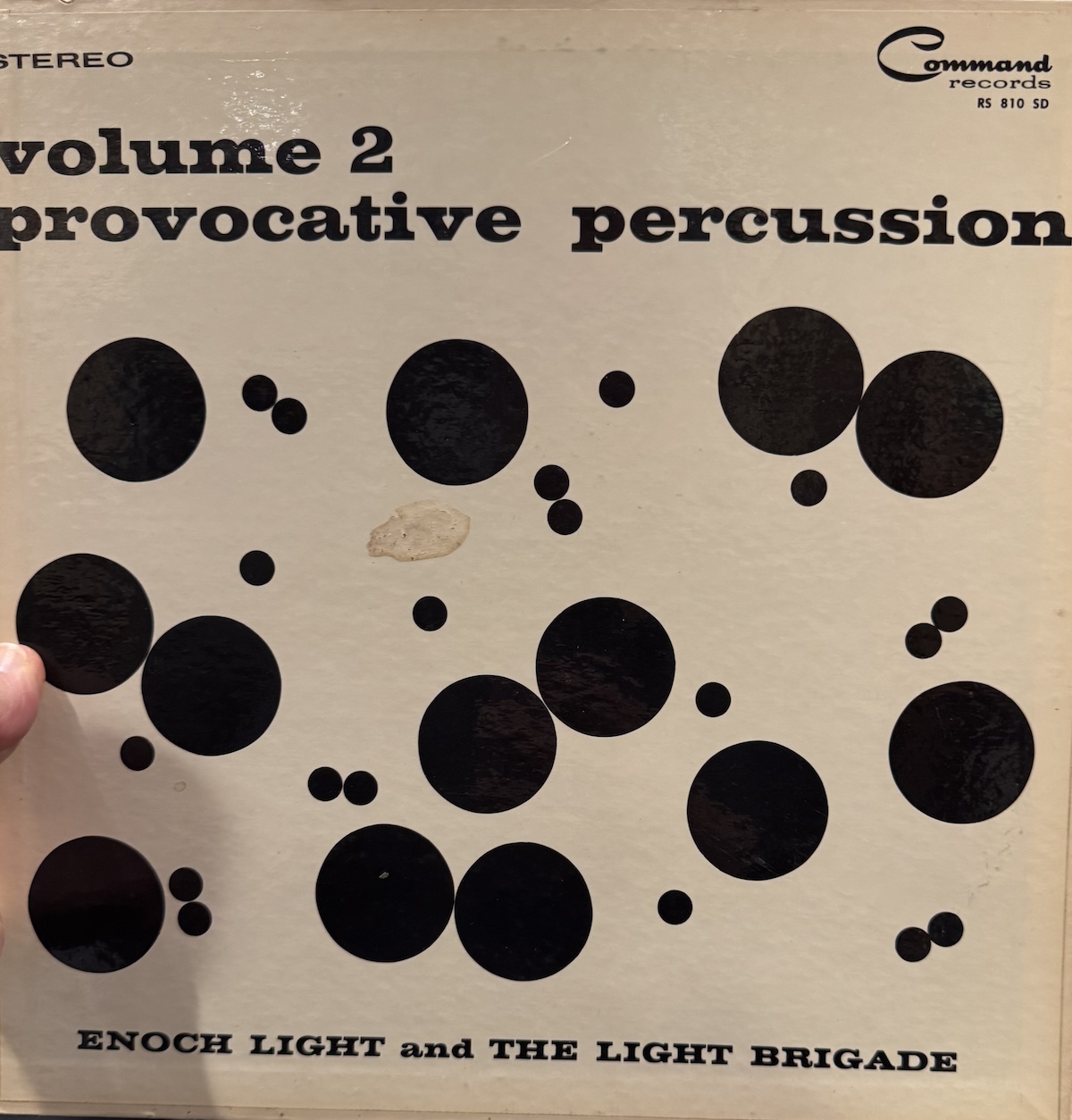
Finally, I wanted to hear how the Oasis did on "small" works so I picked at random a recording I've never before played but have had for years, a 1977 Harmonia Mundi "Black Label" French recording of Brahms Sonatas for clarinet and piano (B 904) performed by Michel Portal (clarinet) and Georges Pludermacher. Never heard of either but looked them up and both have impressive credentials. Portal is still going at 89!
A beautiful recording, though the piano is somewhat in the background and caught up in reverb but the clarinet sounds round and sweet as it's heard live, and has a pleasing sense of flow. There are some sizable dynamic shifts within "Sonata 2" that the Oasis reproduced with ease and within the piece's ebb and flow are the small ones that bring the performance to life. Midway in the recapitulation Pludermacher hits the keys pretty hard, bringing the piano sound out of the reverb and into the room before again receding into the background. The attack was fast and clean, the sustain natural and the decay effervescent, helping to produce a sense of very enjoyable and enticing realism. The Oasis demands your attention, making turning it off difficult.
Conclusion
The Manley Labs Oasis phono stage combines ease of use with a wide range of set-up options. It has sufficient gain and a low enough noise floor to make it compatible with all but the lowest output MC cartridges, plus it's easily used with MM cartridges and H.O. MCs as well. While it is quiet, switching to my reference solid state phono preamp put more black in the background, but some might still prefer the special tube flow. Speaking of tubes, definitely try some options if you have the opportunity. The Electro-Harmonix HE tubes are very good but it's worth experimenting with others if you have access. Just be careful!
Impressive musical flow, combined with notable overall transparency, and delicate but resolute high frequency transient performance and robust deep bass make it useful for every musical genre, even though I left many out of this review. I played everything.
I found grounding somewhat more finicky than usual in that a few attempts produced some horrendous odd undulating and loud buzzing. I got better results with the tonearm ground wire disconnected. So if you buy an Oasis, keep levels low as you experiment. I also found it very susceptible to static electrical discharges—the instructions allude to that. Be sure to ground yourself before touching anything and de-stat the record before play with at least a good carbon fiber brush.
Otherwise, the Manley Labs Oasis, made in America, was worth the wait! Before buying anything in the $4000 price range try to give it an audition. I had trouble turning it off each evening.
Specifications
• Vacuum Tube Complement: 6922 x 2 (gain stage) plus 6922 x2 (output stage). Any 6DJ8, 7308, ECC88 types may be used.
• Unbalanced Input and Output connections via Manley Teflon ® & Gold plated RCA jacks
• Automatic Mute Timer: On initial power up output jacks are muted for approximately 45 seconds. Automatic mute circuit allows tubes to warm up and circuitry to settle. At power down, output jacks are immediately muted.
• Input Termination Capacitance: 3-position user-selectable capacitor values of 50pF, 100pF, and 200pF yield resultant combinations of: 50, 100, 150, 200, 250, 300, and 350pF. Use these settings typically for Moving Magnet (MM) cartridges.
• Default Input Impedance: 47k Ohms, with no other DIP switches selected. Use this setting typically for Moving Magnet (MM) cartridges.
• Selectable Input Impedance: 5-position user-selectable resistor values of 50, 100, 200, 400, and 800 Ohms. There are 32 possible loading possibilities. Use these resistive loading choices typically for Moving Coil (MC) cartridges.
• Custom cartridge input load impedance. (Internal. Must solder your own fixed resistor value, suggested 1/4 Watt or 1/2 Watt - 1% - Metal Film resistor, and use the internal jumper to switch between positions default or a custom load impedance). Keep in mind that when installing a custom resistor value, all of the resultant values shown on Fig. 3 on page 5 will be different as they will be calculated in parallel with your resistor value!
• Gain: Rear Panel DIP switches select 45dB, 50dB, 60dB, or 65dB (whenever the phono amplifier gain is changed, the output RCA jacks are muted. The automatic mute circuit activates for approximately 18 seconds to allow circuitry to settle).
• Inter-channel differential gain: Less than ± 0.5 dB from 20Hz to 20kHz at any gain setting.
• Deviation from RIAA curve: Less than ± 0.5 dB from 20Hz to 20kHz at any gain setting. Typically less than ±1dB from 10Hz to 100kHz.
• Distortion (THD+N) (47k Ohm Input Termination, 45dB gain, 1kHz sine, 0dBu output): Typical 0.030% THD+N, into 100k Ohm load, BW = 100Hz-22kHz
• Distortion (THD+N) (47k Ohm Input Termination, 45dB gain, 1kHz sine, 0dBu output):
Typical 0.070% THD+N, into 600 Ohm load, BW = 100Hz-22kHz
• Dynamic Range (47k Ohm Input Termination, Gain set to 45db, 200 Ohm source): 88dB @ 1kHz, 0.1% THD+N, BW = 22Hz-22kHz
• Dynamic Range (47k Ohm Input Termination, Gain set to 45db, 200 Ohm source): 102dB @ 1kHz, 1.0%
THD+N, BW = 22Hz-22kHz
• Noise Floor at 45dB gain setting with shorted input: -84 dBu, A-weighted
• Noise Floor at 60dB gain setting with shorted input: -74 dBu, A-weighted
• Noise Floor at 65dB gain setting with shorted input: -69 dBu, A-weighted
• Maximum Input at 45dB gain setting with 20 Ohm Source Z @ 1kHz into 10 kOhm load: 210mV RMS = +34 dBu @ 1% THD+N BW=22Hz-22kHz
• Maximum Input at 60dB gain setting with 20 Ohm Source Z @ 1kHz into 10 kOhm load: 21mV RMS = +33.5 dBu @ 1% THD+N BW=22Hz-22kHz
• Maximum Output: +35dBu @ 1kHz, 1.5% THD+N into 100 kOhm load
• Output Impedance: 104 Ohms
• Minimum Recommended Load: 2500 Ohms
• Internal Switch Mode Custom Power Supply: Fully regulated High Voltage (B+), Heater, and control voltage rails.
• Operating Mains Voltage: 90-254VAC (internal universal supply)
• Power Consumption in Standby mode: Less than 1 Watt
• Power Consumption: 30 Watts (250mA @ 120VAC)
• Mains Voltage Frequency: 50 ~ 60Hz (47Hz to 63Hz)
• IEC Mains Fuse & SMPS fuses: 2A ~ 250VAC (Type: Slow-Blow, Body: Ceramic or Glass, Size: 5mm x 20mm)
• Chassis Dimensions: W=17”, L=14”, H=3 1/2” (Occupies 2RU)
• Shipping Box Dimensions: W=23”, L=18”, H=7”
• Shipping Weight: 20 Lbs.


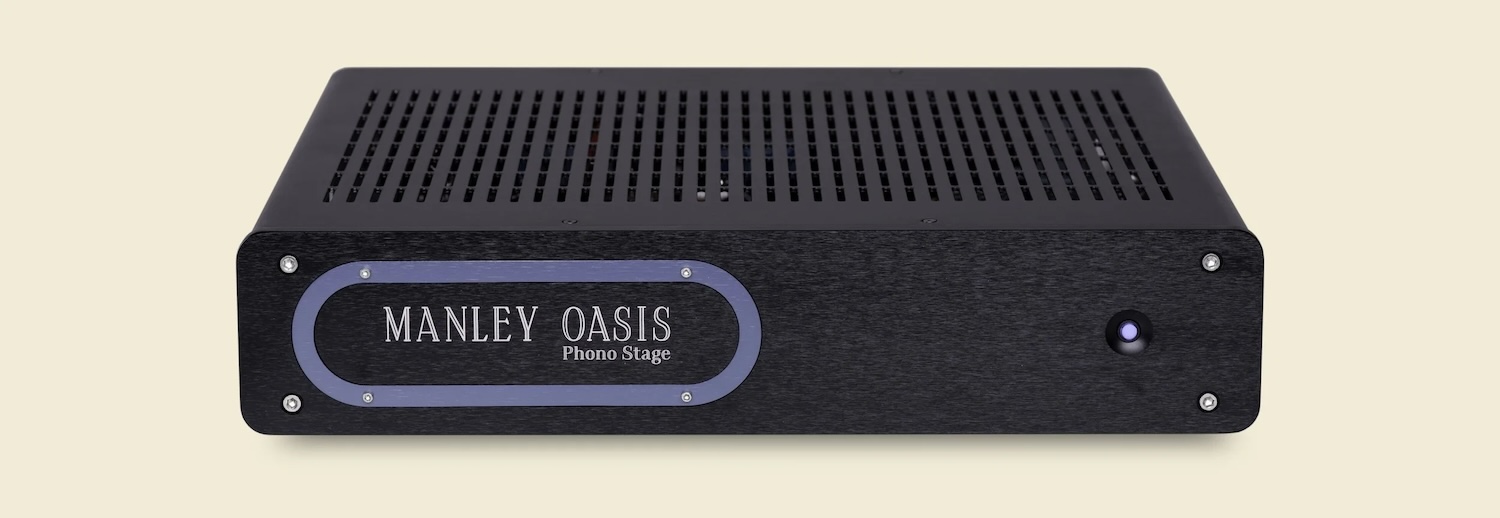

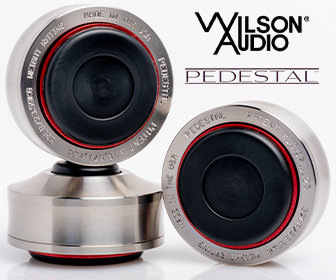

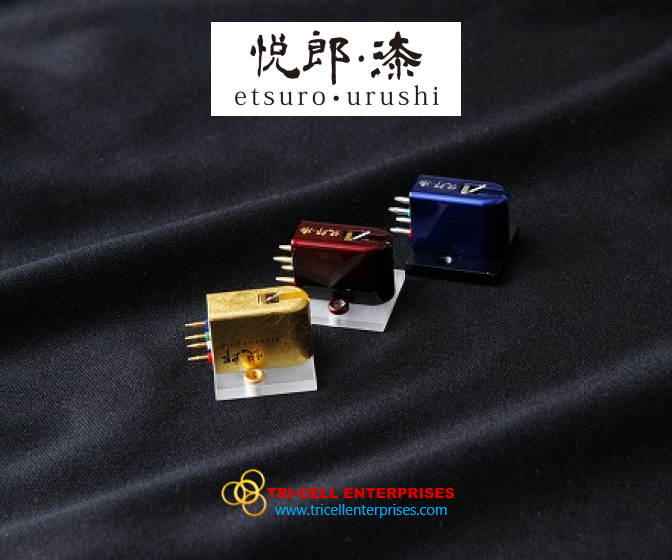

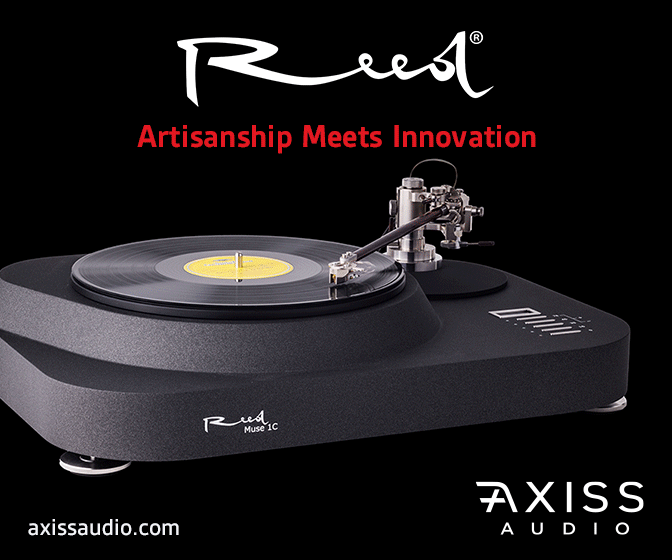
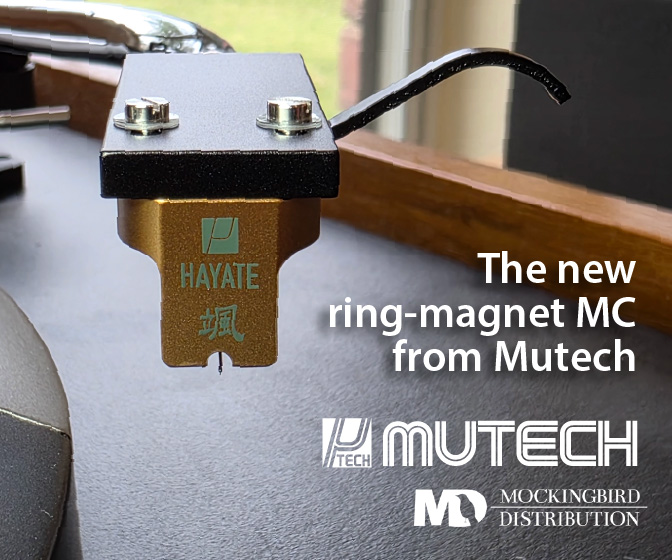
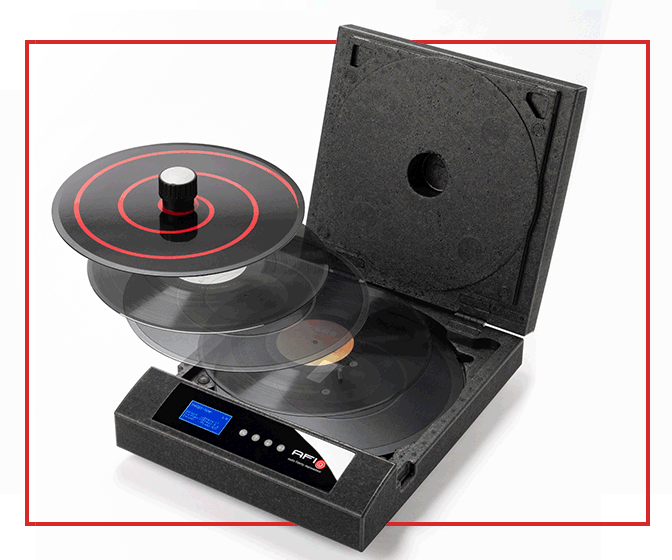

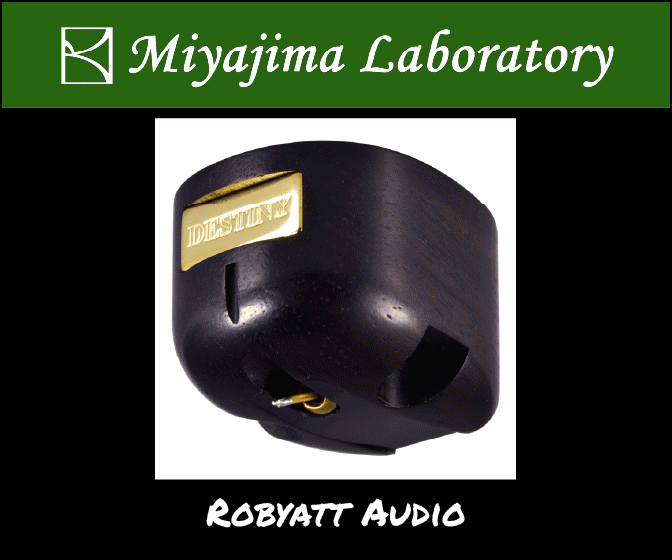



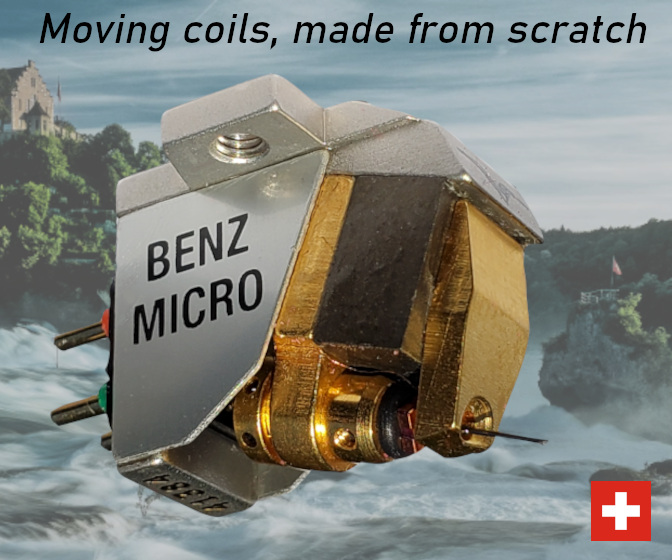

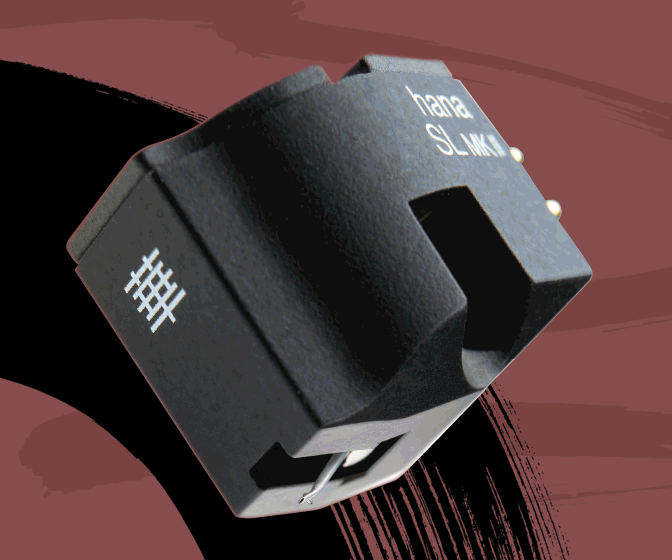
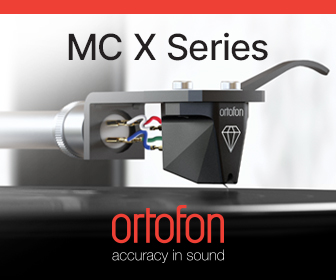
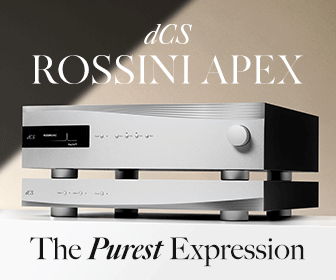


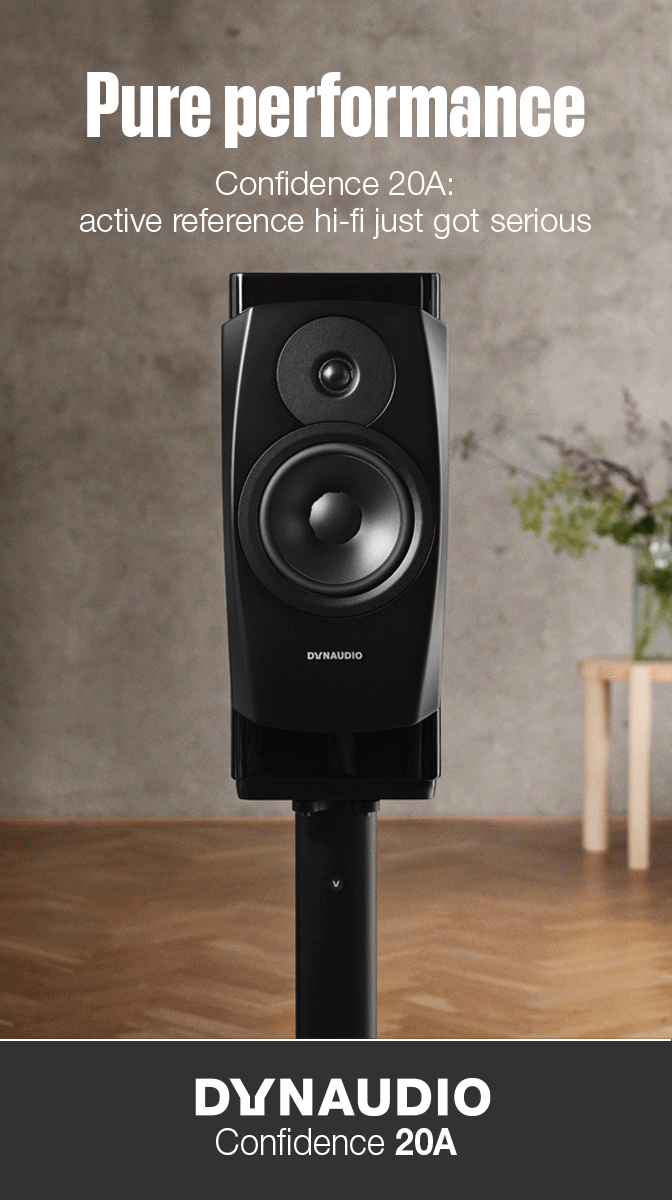
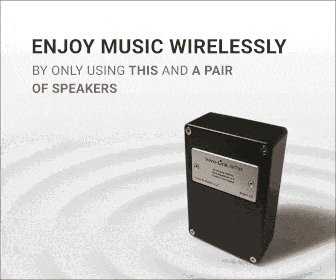
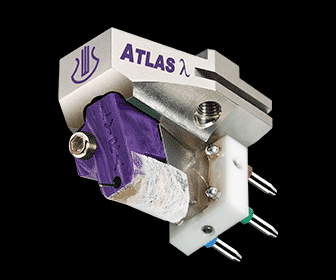

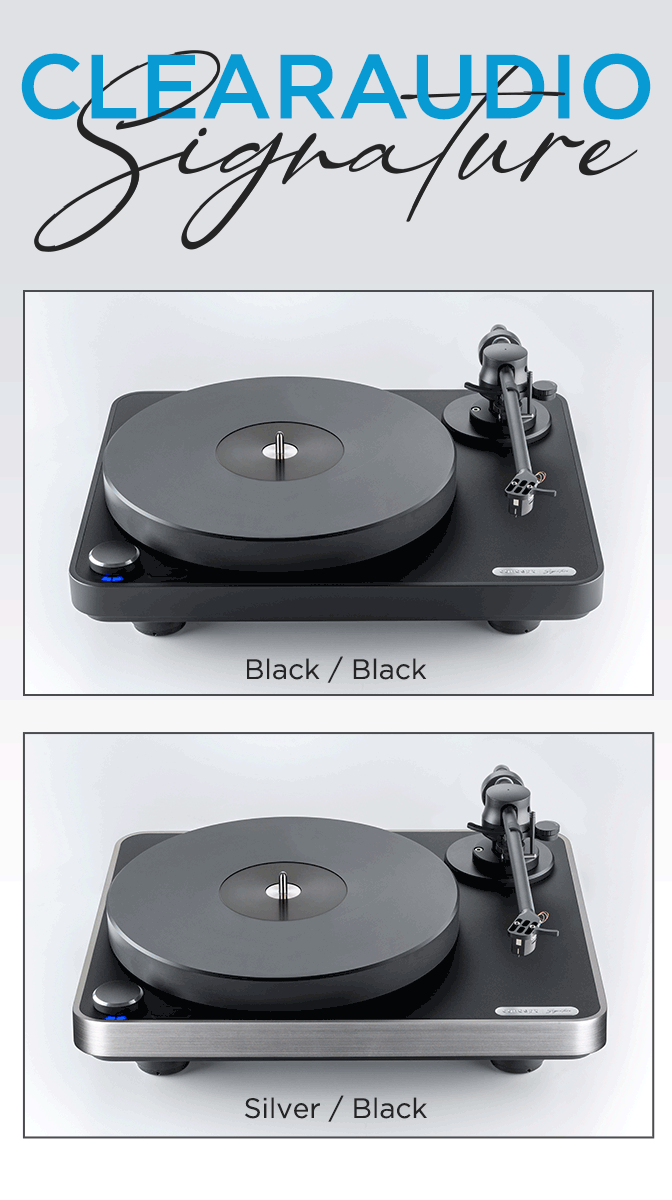


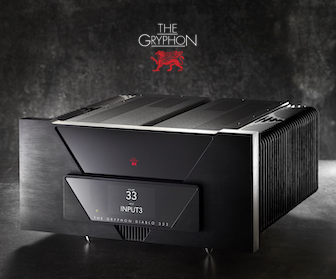
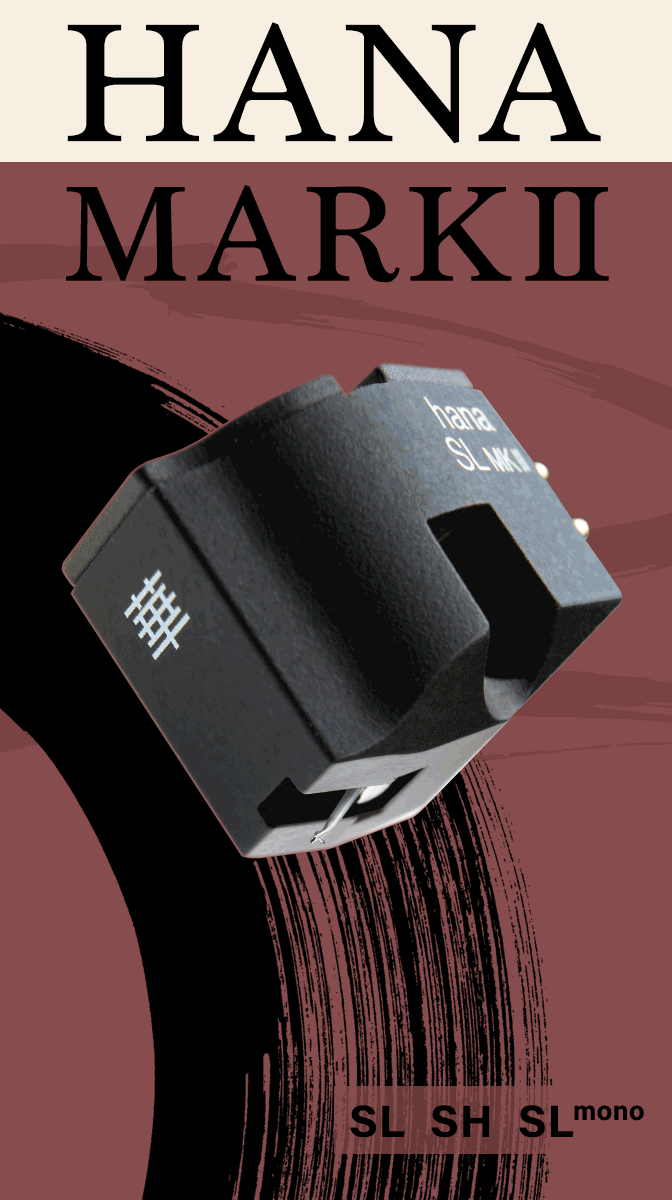


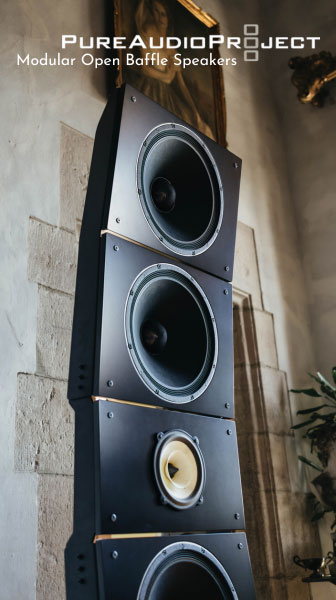
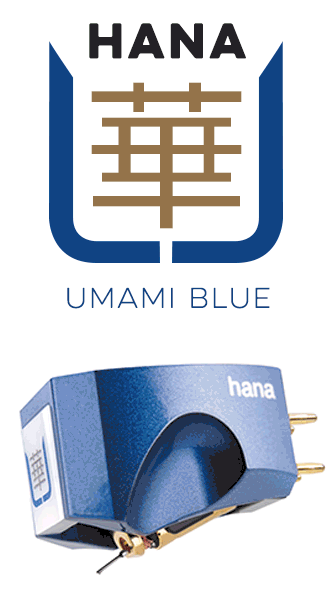





.png)








